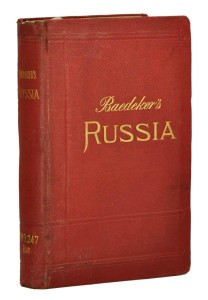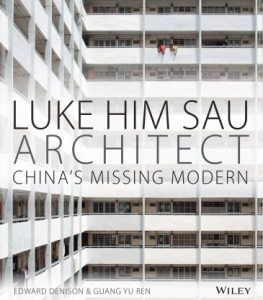Posted: April 26th, 2014 | No Comments »
A fascinating piece in this weekend’s Financial Times by David Pilling on CT Loo (below), the Paris-based Chinese antiquities dealer who arrived in France in 1902 and established a reputation as the major dealer in Chinese art and atrefacts in Europe. Very little has ever really been known about Loo for sure – his life has always been a mix of mystery, obfuscation and rumour. I stumbled across his famous pagoda like showroom in Paris many years ago and did eventually visit it properly some time back when in Paris searching for Chinoiserie remnants in the nearby Parc Monseau (see blog post here). Oddly enough CT Loo popped up again recently when I was asked to talk about Peking in 1930 at the Noguchi Museum in New York as part of the events they had organised around their exhibition on Noguchi’s time in Peking studying under Qi Baishi that year.
Here’s my small Loo anecdote then – while in Peking in 1930 the Japanese-American sculptor Noguchi had a small circle of western friends. Among these was the Frenchman Jean-Pierre Dubosc.
Dubosc was attached as a diplomat to the French Legation in Peking and an avid collector of Chinese artefacts. He also happened to be married to Janine Loo, one of CT Loo’s daughters. Dubosc was a habitué of the antique and curio shops of Peking from where he sourced various treasures for European and American museums (most notably the Guimet Museum in Paris, a specialist collection of Asian art) as well as for C.T. Loo’s dealership business.
Anyway, if you read one thing this weekend then this article is the one and it also promises a forthcoming biography of Loo, which I, for one, eagerly await.
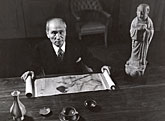
Posted: April 26th, 2014 | No Comments »
Macao’s full and secret history during World War Two still remains to be told and political correctness and erstwhile later “patriots” of Beijing’s massive family and business interests still prevent that. However, John Reeves’s memoirs of his time as British Consul in Macao between 1941-1946 goes some way to filling that gap….
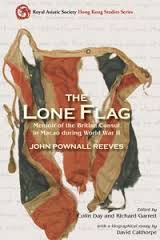
When Hong Kong fell to the Japanese on Christmas Day 1941 Macao was left as a tiny isolated enclave on the China Coast surrounded by Japanese-held territory. As a Portuguese colony, Macao was neutral, and John Reeves, the British Consul, could remain there and continue his work despite being surrounded in all directions by his country’s enemy. His main task was to provide relief to the 9,000 or more people who crossed the Pearl River from Hong Kong to take refuge in Macao and who had a claim for support from the British Consul.
The core of this book is John Reeves’ memoir of those extraordinary years and of his tireless efforts to provide food, shelter and medical care for the refugees. He coped with these challenges as Macao’s own people faced starvation. Despite Macao’s neutrality, it was thoroughly infiltrated by Japanese agents and, marked for assassination, Reeves had to have armed guards as he went about his business. He also had to navigate the complexities of multiple intelligence agencies—British, Portuguese, Japanese, Chinese Nationalist—in a place that was described as the Casablanca of the Far East.
John Pownall Reeves (1909–78) was British Consul in Macao 1941–46.
Posted: April 25th, 2014 | No Comments »
RAS Weekender / M on the Bund Salon
SATURDAY 26th April 2014
4pm for 4.15pm
Â
Glamour Bar
Â
EDWARD DENISON
Luke Him Sau
Architect: China’s Missing Modern
In this talk, Edward Denison will examine China’s architectural encounters in the first half of the 20th-century through the lens of one of the country’s most distinguished yet overlooked practitioners: Luke Him Sau (Lu Qianshou, 1904–1991).
Luke is best known internationally and in China as the architect of the iconic Bank of China Headquarters in Shanghai. One of the first Chinese students to be trained at the Architectural Association in London in the late 1920s, Luke’s long, prolific and highly successful career in China and Hong Kong offers unique insights into an extraordinary period of Chinese political turbulence that scuppered the professional prospects and historical recognition of so many of his colleagues.
The story of Luke’s life begins with his childhood in colonial Hong Kong and his apprenticeship with a British architectural firm, before travelling to London to study at the prestigious Architectural Association (1927–30). In London, Luke was offered the post of Head of the Architecture Department at the newly established Bank of China and spent the next seven years in the inimitable city of Shanghai.
From his Shanghai base, he designed buildings all over China for the Bank and other clients before the Japanese invasion in 1937 forced him, and countless others, to flee to the proxy wartime capital of Chongqing. After the war he returned to Shanghai where he formed a partnership with four other Chinese graduates of UK universities; but civil war (between the Communists and Nationalists) once again caused him and others to uproot in 1949.
Initially intent on fleeing with the Nationalists to Taiwan, Luke was almost convinced to stay in Communist China by his friend and fellow architect, Liang Sicheng, but decided finally to move to Hong Kong. There, for the third time in his life, he had to establish his career all over again. Despite many challenges, he eventually prospered, becoming a pioneer in the design of private residences, schools, hospitals, chapels and public housing.
Edward Denison (architectural historian, writer and photographer) and Guang Yu Ren (architect, researcher and independent consultant) have nearly two decades of international professional experience in architecture and design. They have worked extensively in the UK, China and Africa and authored numerous books based on their projects. These include: Building Shanghai – The Story of China’s Gateway (John Wiley & Sons, 2006), Modernism in China – Architectural Visions and Revolutions (Wiley, 2008), The Life of the British Home – An Architectural History (Wiley, 2012) McMorran & Whitby (RIBA, 2009) and Asmara: Africa’s Secret Modernist City (Merrell, 2003). They are now based in London where Edward is a Research Associate and teaches architectural history and theory at the Bartlett School of Architecture, University College London (UCL) and is a teacher at New York University in London.
ENTRANCE: Â 75 RMB
Includes a glass of wine or soft drink
MEMBERSHIP applications and membership renewals will be available at this event.
WEBSITE: Â www.royalasiaticsociety.org.cn
Posted: April 24th, 2014 | No Comments »
Lincoln Paine’s The Sea and Civilisation: A Maritime History of the World is a terrific and absorbing read. For the China Rhymer it’s fascinating largely in that so much of global maritime history is linked to China and the Far East. Europeans and Americans are of course newcomers to the oceans. Just to give a small offering of the many delicacies of the book it is worth remembering, as Paine points out, that the sea was how Islam reached Indonesia and South East Asia and that during the Liu Song dynasty Buddhism was brought to China partly by sea. At the time of Marco Polo Guangzhou was a far busier port than Alexandria, the Mediterranean’s major port at the time. And on and, fascinatingly, on….Of course many of us know all this, or most of it, but putting it altogether in one book and contrasting with the maritime exploits of everywhere else has significant merit.
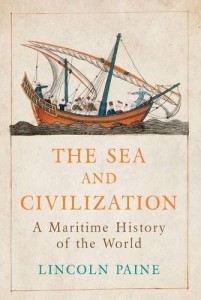
Lincoln Paine takes us back to the origins of long-distance migration by sea with our ancestors’ first forays from Africa and Eurasia to Australia and the Americas. He demonstrates the critical role of maritime trade to the civilizations of ancient Egypt and Mesopotamia, and the Indus Valley. He reacquaints us with the great seafaring cultures of antiquity like those of the Phoenicians and Greeks, as well as those of India, Southeast and East Asia who parlayed their navigational skills, shipbuilding techniques, and commercial acumen to establish vibrant overseas colonies and trade routes in the centuries leading up to the age of European overseas expansion. His narrative traces subsequent developments in commercial and naval shipping through the post-Cold War era. Above all, Paine makes clear how the rise and fall of civilizations can be traced to the sea.
Posted: April 23rd, 2014 | No Comments »
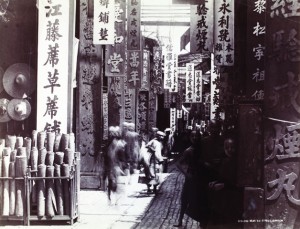
Thursday 24 April, 18:30-19:30; Book by Wednesday 23 April
Admission: Friends and students £2.50; Public £5
Professor Robert Bickers (Professor of History, University of Bristol)
Scratch beneath the surface, or root around in the back of the cupboard, and you can often find in cities like Bath direct evidence of the long-intertwined histories of Britain and China. This talk will explore these, focusing on the rich archive of visual records of China’s modern history held in the UK.
Posted: April 22nd, 2014 | No Comments »
I’m sorry but I’m just not convinced of the importance of ping-pong diplomacy – it’s probably just me. I know everyone likes to talk about it as the “icebreaker” and I’m sure it played a role, but I just feel I’m always being oversold on its importance. Still, Nicholas Griffin’s Ping-Pong Dioplomacy: Ivor Montagu and the Astonishing Story Behind the Game that Changed the World does indulge in this inflation (“astonishing”, “Saved”!!) but it’s immensely readable all the same.
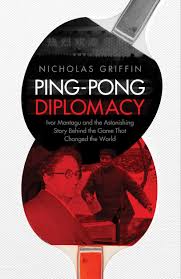
It was one of the most significant developments of the post-war era: China finally abandoning its close relationship with the Soviet Union to begin detente with the USA. Astonishingly, the man who helped make it happen was a British aristocrat, Ivor Montagu, a Soviet spy who knew Stalin and dined with Trotsky. Even more remarkably, the means to this rapprochement was table tennis, a sport loved by both Chairman Mao and Montagu. For years, Montagu had lived a dual life, working to spread communism and also table tennis around the world. Surprisingly, the two strands of his career would come together in an event of global significance.
Nicholas Griffin weaves a compelling story to reveal the background to the famous occasion in 1971, when the USA’s Glenn Cowan, a 19-year-old hippie, befriended China’s world champion Zhuang Zedong, who was imprisoned during the Cultural Revolution. Within days, the Americans would be playing the Chinese in front of 18,000 fans in Beijing, with the whole world watching. It was the beginning of a thaw in Sino-US relations that forced the Soviets into a crippling arms race that acted as a catalyst to pressuring them into errors that would draw the Cold War to an end. Sometimes sport truly can have the biggest consequences.
Posted: April 21st, 2014 | No Comments »
GRETCHEN LIU
 on
Liu Haisu: Shanghai, Paris, Art and Friendship 1926-1937
Tuesday 22 April 7:00 for 7:15 PM
RAS Library at the Sino-British College
1195 Fuxing Zhong Lu
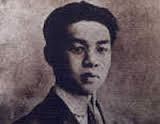
The history of art during the Republican era is closely associated with the Shanghai Art Academy. In recent years scholars in China and in the West have researched the history of the Academy, its founder and longtime principal Liu Haisu (1896-1994), as well as its faculty and students, to better understand its role in disseminating Western art theory and practice in China.
Â
When Liu Haisu was sent to Europe on a government mission to further his study of Western art and promote a greater understanding of modern Chinese art in Europe he contacted two of the Academy’s former students for advice, Liu Kang (1911-2004) and Chen Ren Hao (1908-1976), who had come to Paris to continue their art studies. Upon arrival Liu Haisu settled into the same accommodation in Nogent-sur-Marne in the eastern suburbs of Paris. There he was introduced to the young writer/translator Fou Lei (1908-1966) who had come to Paris to study the French language and literature and was developing an interest in art through his friendship with Liu Kang and Chen Ren Hao.
Â
From 1929 to 1931 this intimate group explored Paris, visiting museums, galleries and artists, and traveled to Switzerland and Belgium. The experiences affected each of them profoundly. Deep friendships were formed that, despite several sharp disagreements and the vicissitudes of time, essentially lasted lifetimes. The lecture draws on the photographs of Liu Kang to illuminate the experiences of Chinese artists in Paris and its impact on Shanghai’s art scene.
Gretchen Liu – A former journalist, book editor and author with a special interest in architecture, visual heritage and the history of travel, Gretchen Liu is the author of a dozen books on Singapore and its history. She is the daughter-in-law of Liu Kang and is working on a book that explores his Shanghai experiences and friendships.
RSVP: to RAS Bookings at: bookings@royalasiaticsociety.org.cn or just Reply to this email.
 Â
ENTRANCE CONTRIBUTION: Members 50 RMB Non-members 70 RMB. Includes a glass of wine or soft drink. Priority for RAS members. Those unable to make the donation but wishing to attend may contact us for exemption.
Â
MEMBERSHIP applications and membership renewals will be available at this event.
Â
RAS MONOGRAPHS – Series 1 & 2 will be available for sale at this event. 100 rmb each (cash sale only)
Â
WEBSITE: www.royalasiaticsociety.org.cn
Posted: April 19th, 2014 | No Comments »
In 1914 the world’s leading travel guides publisher Baedeker published the first edition of their guide to Russia which included chapters on Tehran, Port Arthur and Peking. The Russians still had a base at Port Arthur and the completion of the Trans-Siberian Railway was just a couple of years away connecting Moscow to Peking, so it made sense to have these inclusions. This edition published by Karl Baedeker of Leipzig was nearly 600 pages long and was presumably intended for those both visiting and travelling across Russia to either China or Persia by train.
